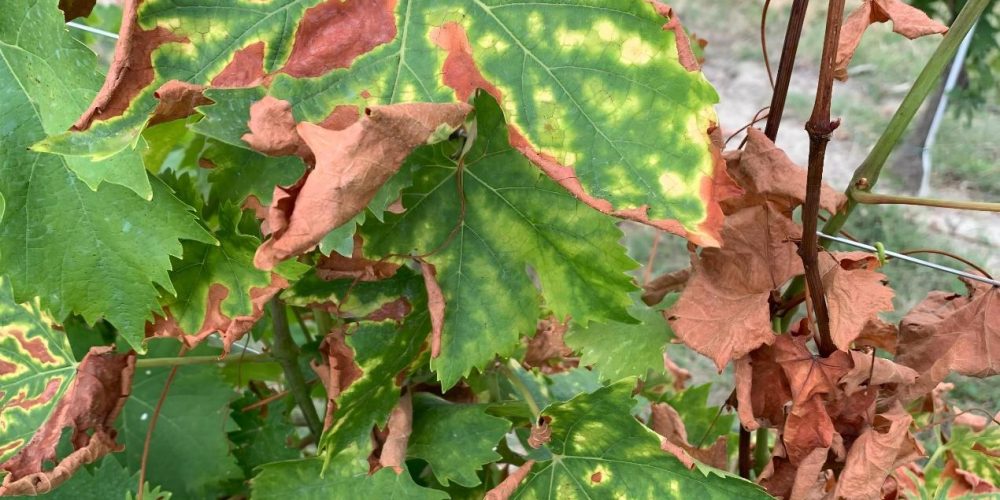Table of contents of the article
ToggleAsuka disease infects grape roots, resulting in weak plants and low productivity. In this article on your website, WORLD OF PLANTS, we will shed light on the most important preventive and curative treatments.
Symptoms of grape asuka disease
- Scientific name : Esca of grapevine
- Type of disease: Innate.
- The causative fungus : A disease complex caused by many fungal species, the most important of which are (Fisch) mediterranea, Fomitiporia, Phaeonwoniella, and chlamydospora (Gams, Crous, Wingf. & Mugnai) Crous & Gams Lal Phaeoacremonium aleophilum (Gams, Crous, Wingf. & Mugnai)
- We can distinguish here between the sudden form of the disease, which causes what is called “apoplexy” of the grapevine, and the slow form of the disease, which is mainly manifested by the appearance of symptoms on the leaf cluster.
- Sudden death or wilting (Apoplexy): Sudden death or wilting of the entire dahlia or its arms occurs in the middle of the growing season, especially in hot and dry weather during the summer. The leaf blades gradually dry out, and the areas of necrosis expand quickly, so that the entire arm or plant dries up within several days. From bottom to top.
- Slow form: Symptoms appear on the leaves in the form of light or pale green spots between the nerves of the leaf, or on their edges. These spots gradually expand, turn yellowish brown or reddish brown, and dry out, and only a narrow line of green tissue remains along the main nerves.
- The lower leaves of the arm are first infected, then the infection extends to the entire arm, and this form of infection does not lead to the grapes wilting until after several years.
- Small pinhead-sized, blackish blue or gray-purple spots appear on the skin of the fruit at the beginning of ripening.
- Clogged and discolored wood vessels. Discoloration can appear in the xylem vessels in the form of black lines, when a longitudinal section is performed on the torso or arm of the injured person, or in the form of black dots in the cross section.
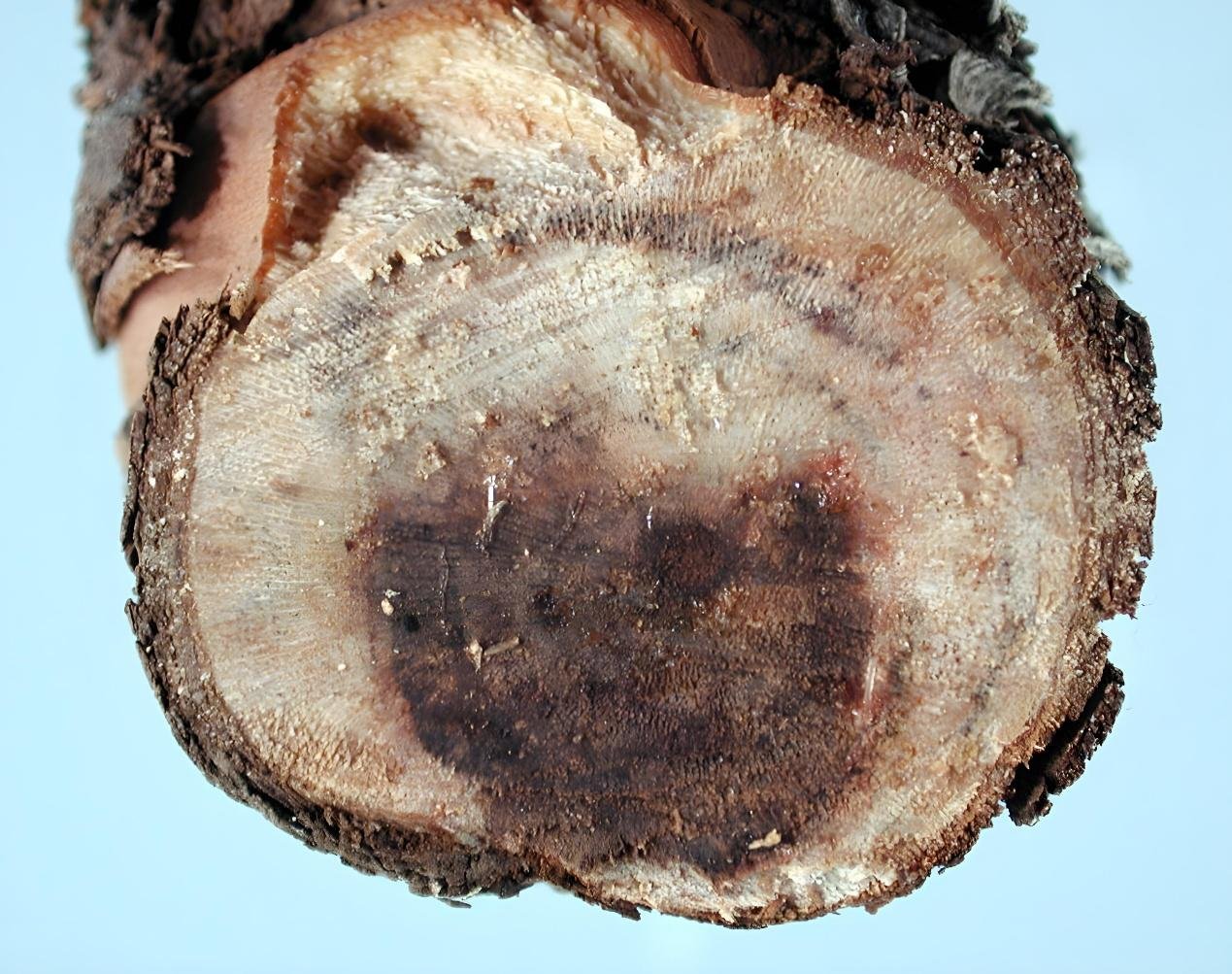
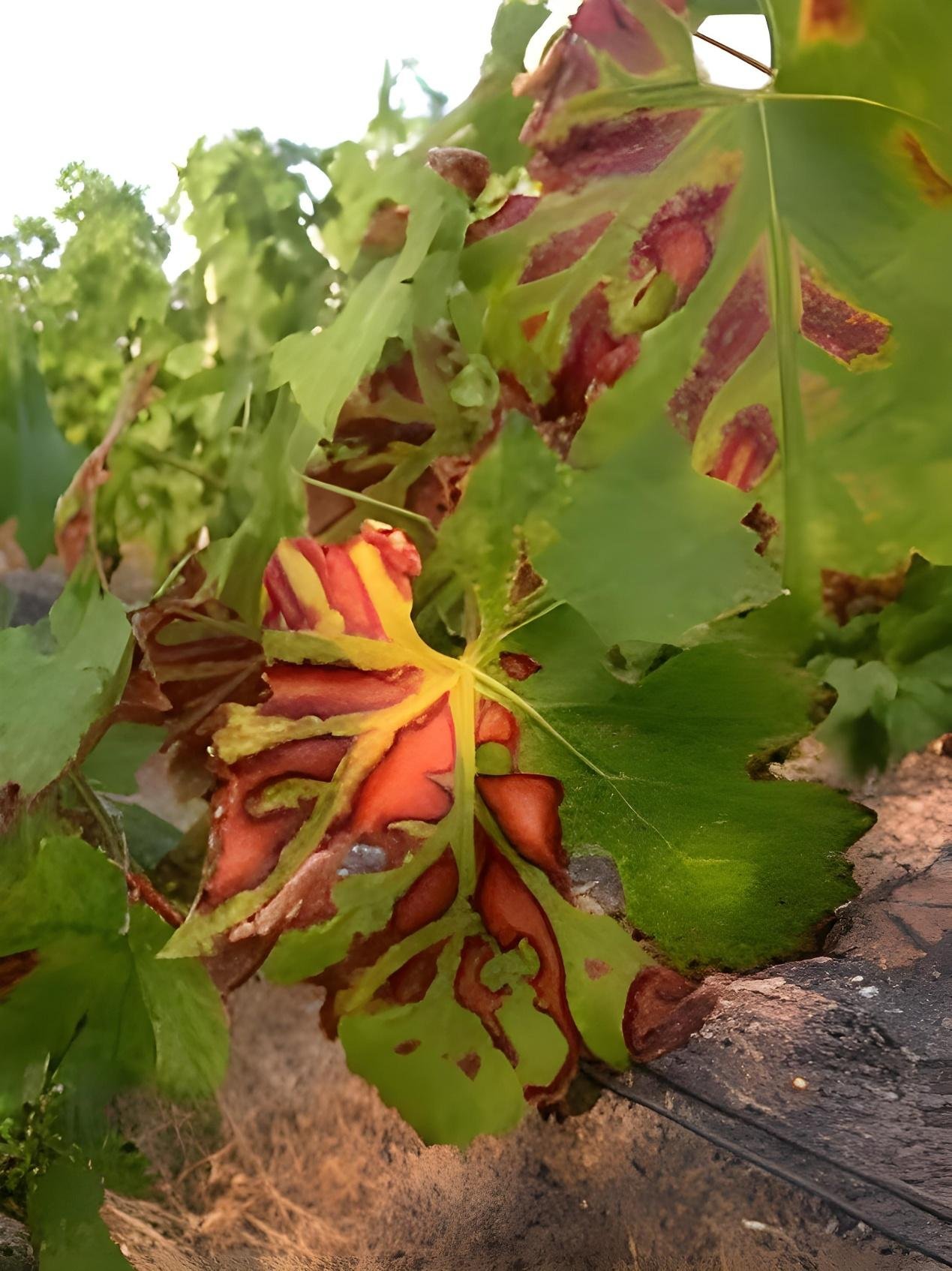
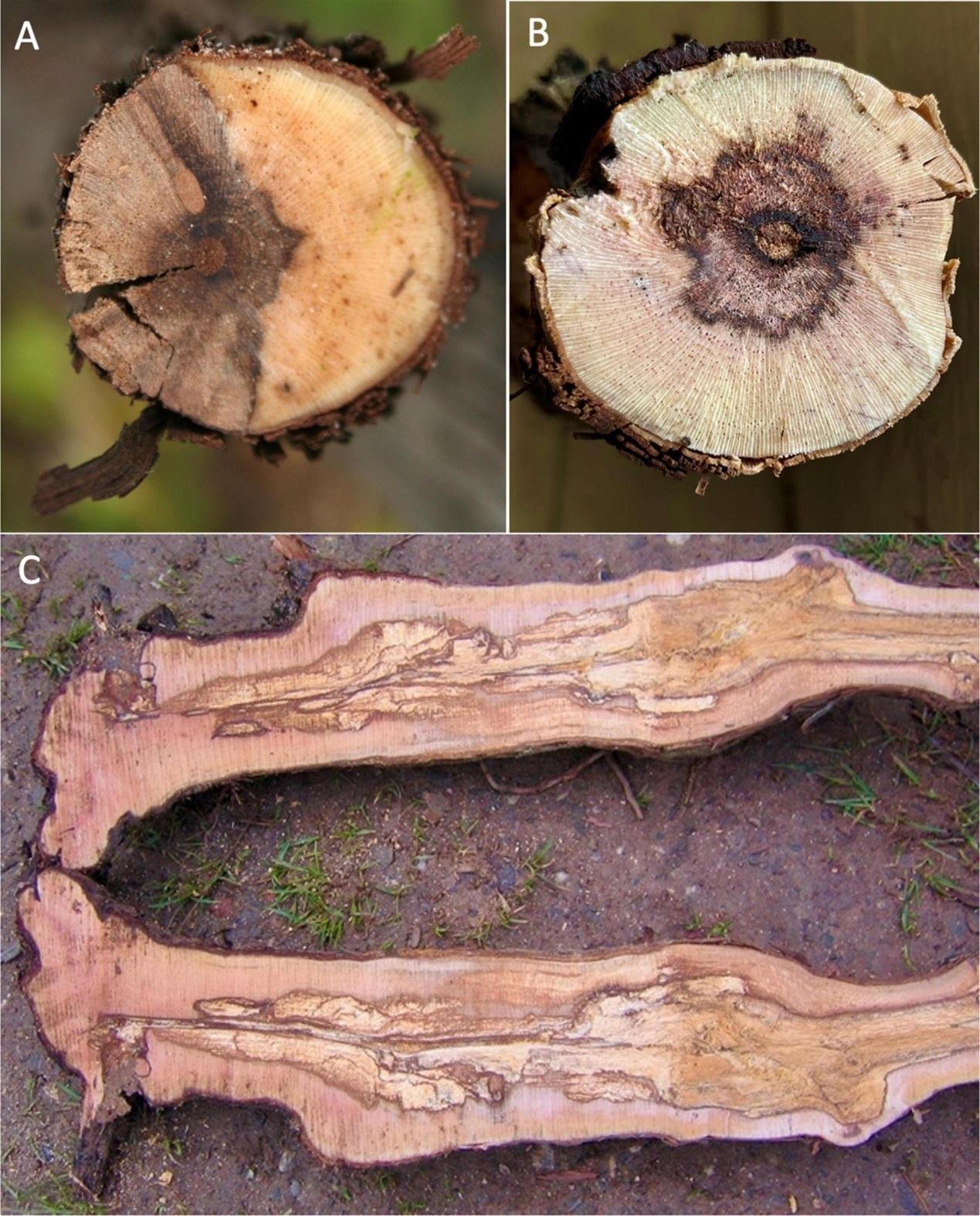
Causes of grape asuka disease
- The possibility of transmission of the disease through grafts taken from infected mothers
- Symptoms on the foliage are caused by toxins secreted by the fungus or by products of interaction with wood that are transferred to the leaves
- As a result of severe water stress.
- Wood rot fungi contribute to the development of the disease on older grapes.
- The blackening that appears in the wood is due to the action of oxidase enzymes
- Infection only occurs through pruning cuts and other wounds
- A tree pruned in December and January is more susceptible to infection than a tree pruned at the end of February and March
Suitable conditions for the spread of grape asuka disease
- Severe pruning, winter frosts, and any wood infection weaken the plants and accelerate the disease cycle.
Development cycle of grape asuka disease
-The Paleophiium fungus sporulates only in the summer, and therefore it is practically unable to infect pruning wounds, while the Chiamydospora fungus is able to sporulate throughout the year and cause infection directly through pruning wounds.
The earlier the pruning time, the longer the period for pruning wounds to become infected
- After the infection occurs, the fungus advances in the wood brain from top to bottom, where it grows and multiplies within the wood tissue of the infected arm, then it is transmitted through the vascular bundles and can reach the maximum point at the base of the main trunk. The fungus causes the cessation of transcription, causing the phenomenon of sudden death
The period between the occurrence of infection and the appearance of the first symptoms of the disease may extend for more than 10 years
– The fungus remains dormant in the wood tissue until the first symptoms of wilting appear, which can extend from 10-15 years.
It appears that the infection with the fungus Pomitiporic mediterranenz comes late after the initial infection with the previous two fungi in the process of successive infection with the various fungi that cause this disease complex, but it plays an essential role in the decomposition and rotting of wood. This fungus is always isolated from the soft, decaying parts of the wood and sometimes forms brown, scaffolding fruits.
Casualties from the spread of grape acacia disease
- The fruits of infected plants tend to remain small in size, and may not reach full maturity, and their taste and sugar content are also affected.
- Severe infection can lead to cracking of the skin, shrinkage of the fruit, and making it more susceptible to attack by secondary rot fungi.
- The trunks of old trees crack, and areas of spongy-looking, creamy-white appearance appear in the wood, which can be crushed by pressing with the finger.
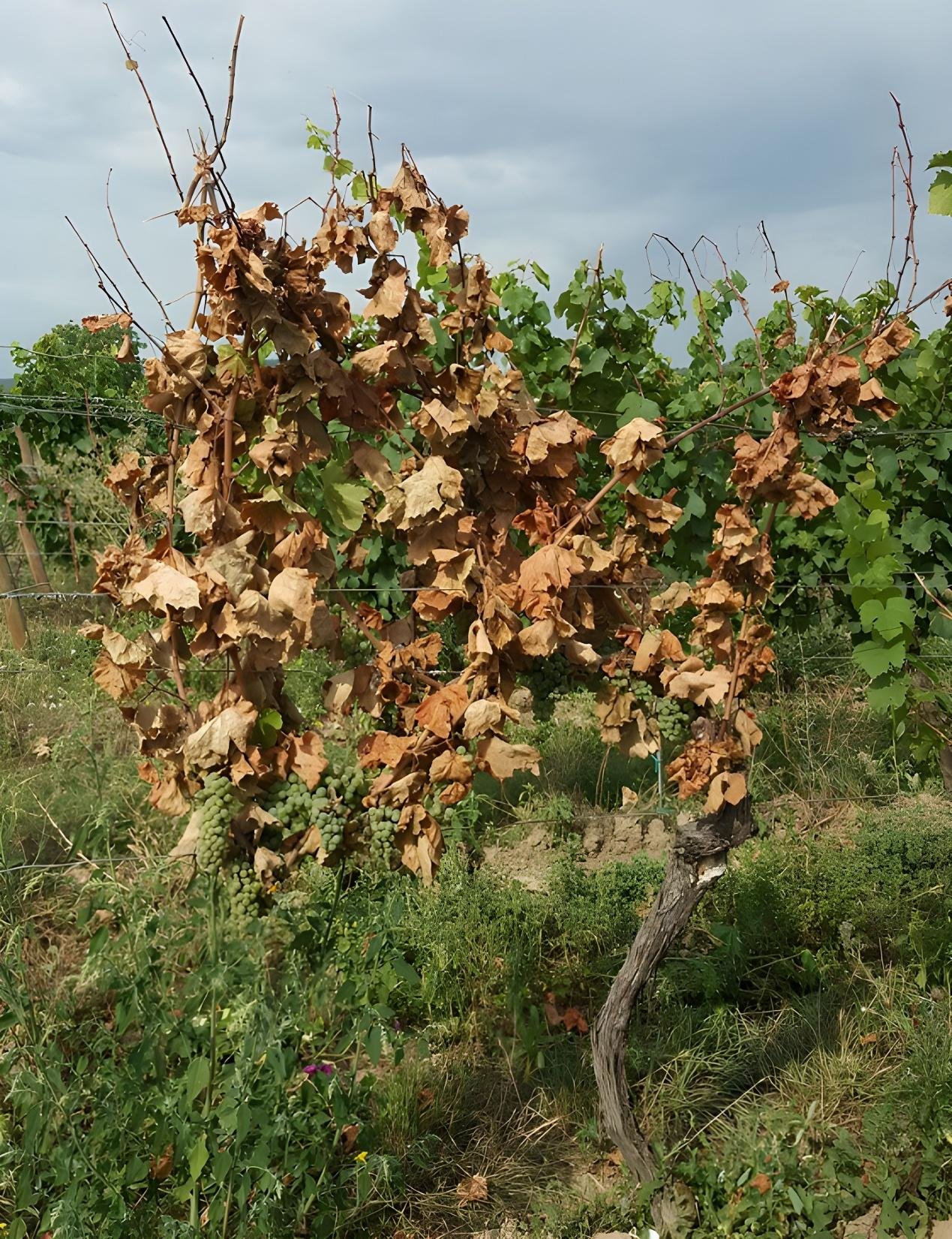
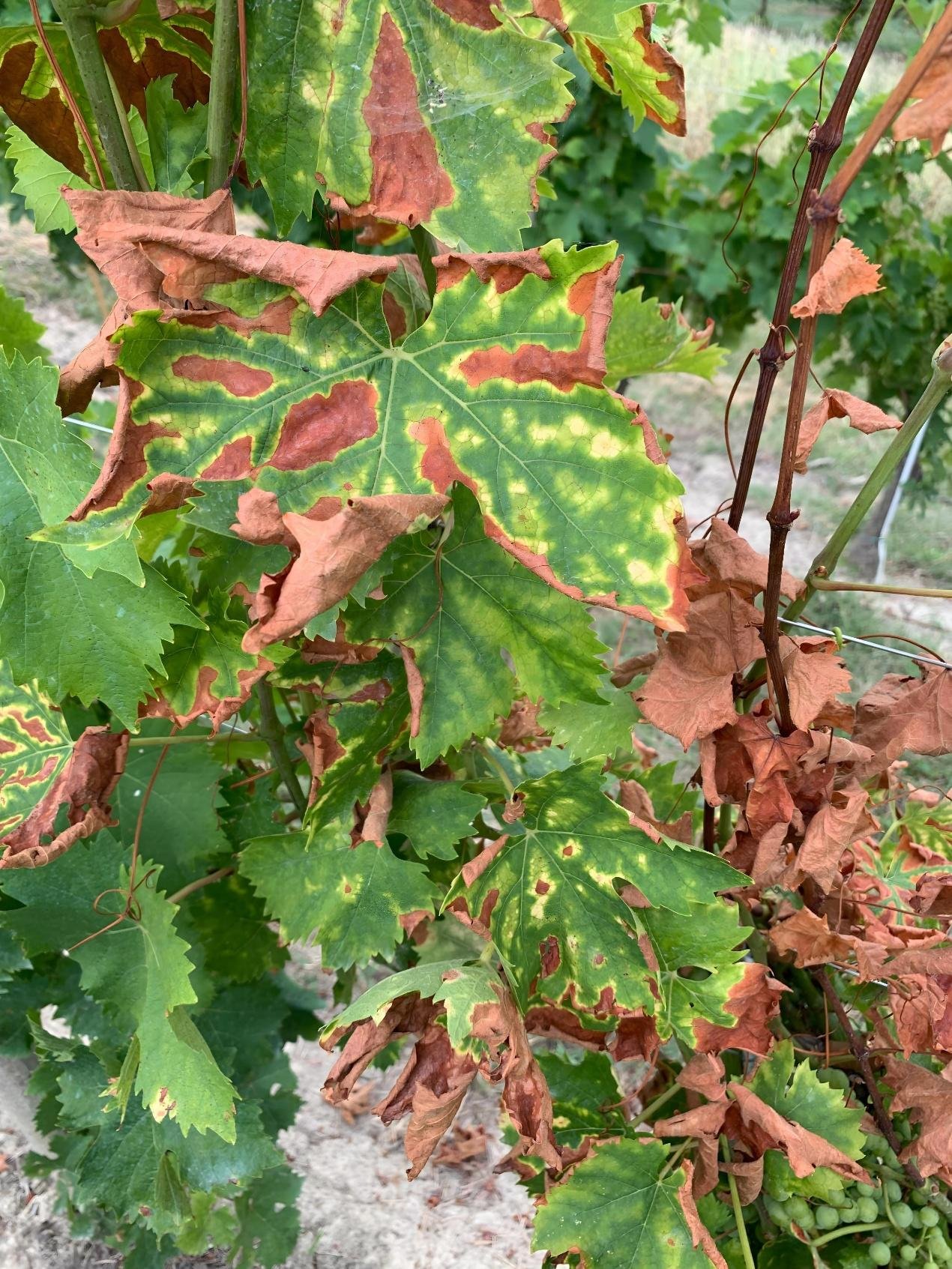
Control strategy
Preventive measures to prevent the occurrence of grape asuka disease
Since the use of sodium arsenate compounds was banned due to their toxicity to humans and the environment, which were used in some countries to combat Alaska disease, combating this disease has relied mainly on taking preventive measures that can limit the risk of infection and reduce the sources of the vaccine.
The timing of pruning is very important. The later the pruning is, the lower the risk of infection
- Avoid removing the main branches, because the area of the cutting area is large, as is excessive pruning. Therefore, when resorting to pruning, it is preferable to disinfect the cutting areas with a restorative paste, or use automatic shears equipped with sprays that allow disinfecting the scissor blade and pruning wounds using a suitable fungicide if using shears. Nomadism, it is useful to permanently disinfect pruning tools.
The sources of inoculum can be limited. The corms of infected plants must be excluded or burned after being uprooted, or stored in a place protected from rain and away from the vines, in order to avoid the spread of fungal spores to healthy plants.
Chemical and organic control recommendations against grape asuka disease
- Organic control :
- Renew the affected plants, after ensuring that the remaining lower part of the infected dahlia is intact and disinfecting the cut site well
- Cut the deltoid lengthwise, and place a piece of wood or stone in the place of the incision between the two lobes in order to make the heart of the tree exposed to air, as this leads to stopping the development of the disease, given that the fungus prefers a closed atmosphere inside the wood tissue. In this way, the affected deltoid can heal if part of it remains. Slim enough.
- Chemical control:
- The fungicides used (azoxystrobin - captan - copper sulphate - fungicidal soap - kresoxim-methyl - mancozeb).
In conclusion, we would like to note that we, at the world of plants website, offer you all the necessary services in the world of plants, we provide all farmers and those interested in plants with three main services::-
- Artificial intelligence consulting service to help you identify diseases that affect plants and how to deal with them.
- Blog about plants, plant diseases and care of various crops ... You are currently browsing one of her articles right now.
- An application that provides agricultural consultations to clients, as well as a service for imaging diseases and knowing their treatment for free – Click to download the Android version from Google Play Store، Click to download the IOS version from the Apple App Store.
references:-
- Hackett, S., & Somers, T. (2011). Grapevine Management Guide 2011–12
- Liu, Q., Wang, S., Li, K., Qiao, J., Guo, Y., Liu, Z., & Guo, X. (2021). Responses of soil bacterial and fungal communities to the long-term monoculture of grapevine. Applied Microbiology and Biotechnology, 105, 7035-7050
- Koklu, M., Unlersen, M. F., Ozkan, I. A., Aslan, M. F., & Sabanci, K. (2022). A CNN-SVM study based on selected deep features for grapevine leaves classification. Measurement, 188, 110425
- Fungi associated with Esca disease of grapevine in Germany – pdf file
- Grapevine Management Guide – pdf file
- Responses of soil bacterial and fungal communities to the long-term monoculture of grapevine – springer
- A CNN-SVM study based on selected deep features for grapevine leaves classification – sciencedirect




